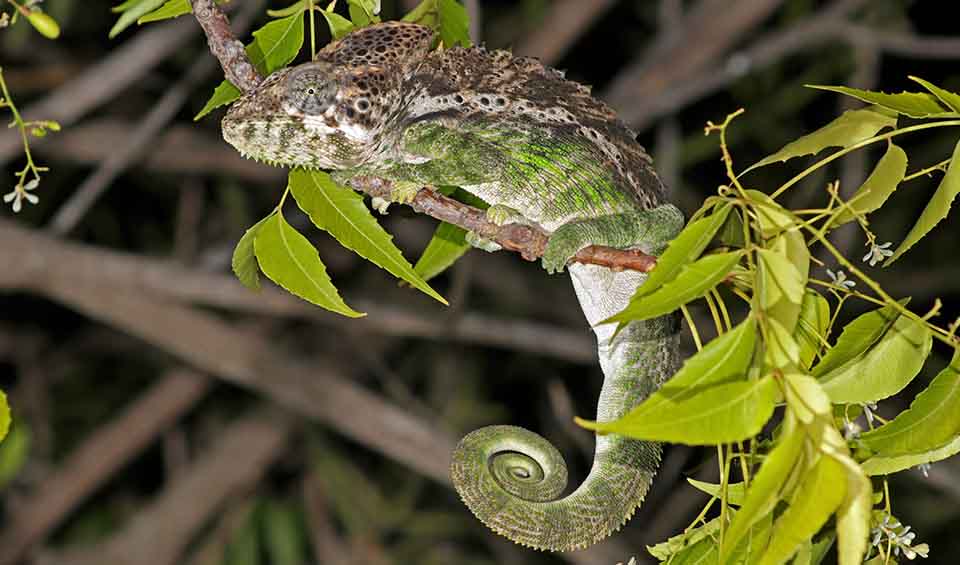Furcifer – Fork chameleons
A genus of Malagasy chameleons characterized by forked feet
Typically, Madagascar’s eastern and northern regions are home to these chameleons. They occupy tropical shrubs and woodlands.
Furcifer chameleons are known for their solitary nature, with individual territories they guard with vigor. Their territorialism is a testament to the fierce competition for resources within their environments. Males, in particular, are known to be highly aggressive toward other males, engaging in vivid color displays and body inflation as a show of dominance. The only time these chameleons typically tolerate the presence of others is during the mating season when their drive to reproduce overcomes their solitary instincts.
Each species within the Furcifer genus has evolved distinct characteristics and conservation needs. Some have developed specialized scales that reflect sunlight to control their body temperature, while others have elongated limbs and tails that aid in navigating their arboreal habitats. The variation in coloration and patterning among these chameleons is not only for camouflage but also plays a crucial role in communication during mating rituals and territorial disputes.
The habitats of Furcifer chameleons are often limited in size, making them particularly vulnerable to the changes brought about by human activities. Deforestation, agriculture, and urbanization are encroaching on their natural habitats, reducing the already finite space available to them. This habitat loss threatens their survival and disrupts the delicate balance of the ecosystems they help maintain.
Species in this genus
Rhinoceros chameleon
A chameleon’s twist, with a rhino’s flair
Angel’s chameleon
Its small horn-like bump on its nose helps differentiate it from similar chameleon species
Malagasy giant chameleon
A giant chameleon native to the lands of Madagascar
Panther chameleon
Famous for their incredible ability to change colors and bulging eyes that can move in different directions at the same time
Warty chameleon
Called “warty” for a reason — their skin is covered in bumpy, ridge-like scales, giving them a battle-armored look like tiny, grumpy dragons






